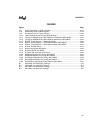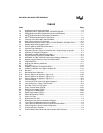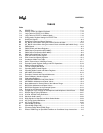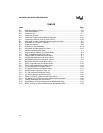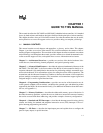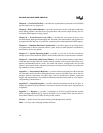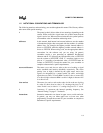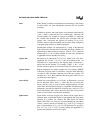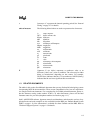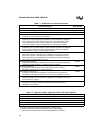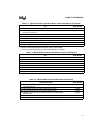
1-3
GUIDE TO THIS MANUAL
1.2 NOTATIONAL CONVENTIONS AND TERMINOLOGY
The following notations and terminology are used throughout this manual. The Glossary defines
other terms with special meanings.
# The pound symbol (#) has either of two meanings, depending on the
context. When used with a signal name, the symbol means that the
signal is active low. When used in an instruction, the symbol prefixes
an immediate value in immediate addressing mode.
addresses In this manual, both internal and external addresses use the number
of hexadecimal digits that correspond with the number of available
address lines. For example, the highest possible internal address is
shown as FFFFFFH, while the highest possible external address is
shown as FFFFFH. When writing code, use the appropriate address
conventions for the software tool you are using. (In general,
assemblers require a zero preceding an alphabetic hexadecimal
character and an “H” following any hexadecimal value, so FFFFFFH
must be written as 0FFFFFFH. ANSI ‘C’ compilers require a zero
plus an “x” preceding a hexadecimal value, so FFFFFFH must be
written as 0xFFFFFF.) Consult the manual for your assembler or
compiler to determine its specific requirements.
assert and deassert The terms assert and deassert refer to the act of making a signal
active (enabled) and inactive (disabled), respectively. The active
polarity (low or high) is defined by the signal name. Active-low
signals are designated by a pound symbol (#) suffix; active-high
signals have no suffix. To assert RD# is to drive it low; to assert ALE
is to drive it high; to deassert RD# is to drive it high; to deassert ALE
is to drive it low.
clear and set The terms clear and set refer to the value of a bit or the act of giving
it a value. If a bit is clear, its value is “0”; clearing a bit gives it a “0”
value. If a bit is set, its value is “1”; setting a bit gives it a “1” value.
f Lowercase “f” represents the internal operating frequency. See
“Internal Timing” on page 2-7 for details.
instructions Instruction mnemonics are shown in upper case to avoid confusion.
In general, you may use either upper case or lower case when
programming. Consult the manual for your assembler or compiler to
determine its specific requirements.



